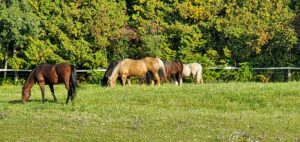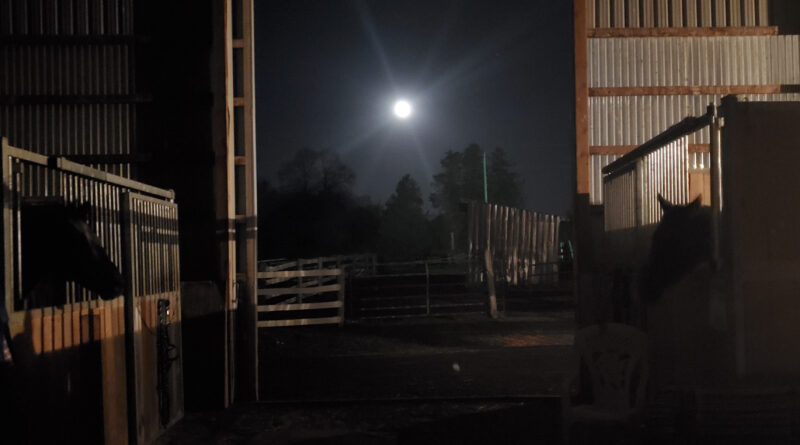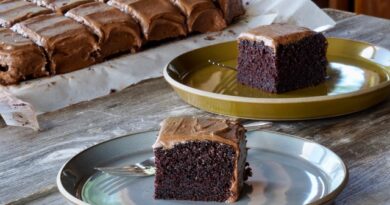The Horse
What does he see as he gazes to the night sky? Can a horse imagine life beyond that moment given to him? Does he know how important his ancestors were to the development of human societies and civilizations through the ages? We can only imagine what he is thinking, as we put our human spin on his thoughts.
Our modern horse is described in the dictionary as: “A solid-hoofed plant-eating domesticated mammal with a flowing mane and tail, used for riding, racing, and to carry and pull loads.”
That description appears inadequate when we look back through the ages and understand that the horse had a substantial influence in transforming the world. He moved from being an ancient food source, being slaughtered by Botai hunters, to being recognized as an animal useful to humans due to his great speed and strength. Since that discovery, horses have pulled our chariots, ploughs, wagons, carriages; carried our mail, our soldiers, doctors, and each other. In the end they became a companion, loyal friend and family member.
When horses were domesticated is an important question. Although difficult to put an exact date on this event there is evidence coming from burial sites where horse bones and skulls were discovered with the remains of chariots in southern Russia spanning 2100-1700 BC. These horses were buried in teams of two with chariots and harness items, providing persuasive evidence that these horses were domesticated. The high value placed on the horse in ancient times is found in particular cultures where the horse was interred in human graves. 
Our modern horse continues to fascinate us! We look into their eyes and imagine the depth of their thoughts. We fantasize about their connection with us, and ours with them.
An author, Keith Overstreet, put his two cents in on defining the horse: “A Sacred Being with great intelligence, strength, beauty, and heart – often misunderstood by the humans they have served and loved so faithfully for thousands of years.”
You can decide which definition you think best suits The Horse.
Submitted by Janice Ecclestone, Inukshuk Farm
www.inukshukfarm.ca




